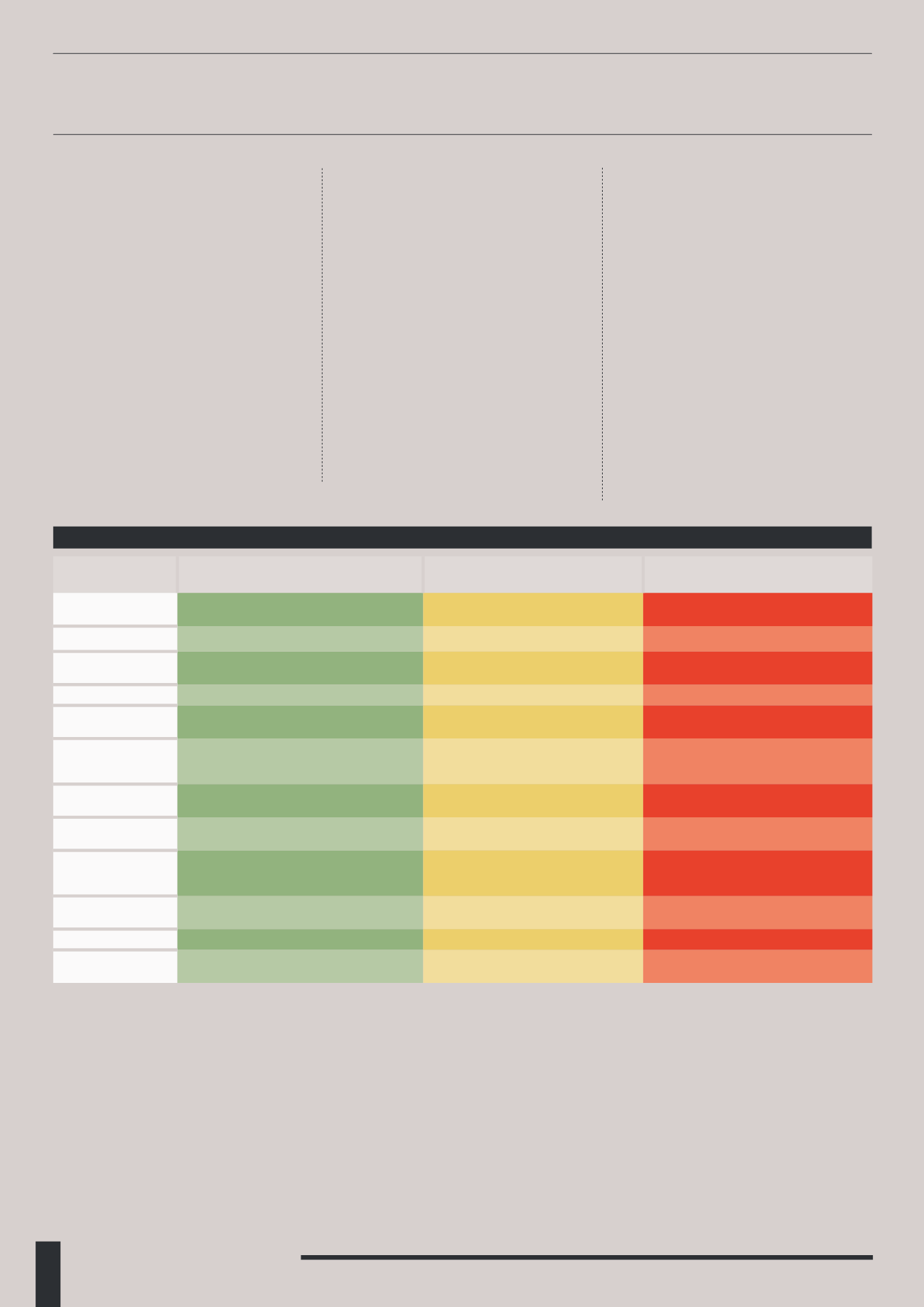
18
ESTABLISHINGINVESTMENTCRITERIA
When considering forestry, common sense
investment criteria can be used to screen
for suitable investments. Each criterion
needs to be fully explored and where
possible supporting evidence gathered -
preferably independent, objective evidence,
rather than the investment provider or
management company’s opinion.
Each investment opportunity can be scored
against the investment criteria (from 0-10)
and then the final scores can be used to
compare a number of potential investments.
To do this, investors need to take a view
on each criterion, and then need to decide
how confident they are in that view. For
example,an investor may be purchasing
freehold land in an undeveloped country,
but trees may have been planted 10 years
ago and the management company has a
strong track record in the sector. Therefore
they can give a lower score.
On the other hand, they may be buying
leasehold land which is going to be planted
with saplings. The land is located in a
developed country, but the management
company is relatively new and does not
have a track record of achieving returns.
This would be given a higher score.
Using investment criteria in this manner
facilitates the screening and selection of
Criteria
Low Risk (0-3)
Medium Risk (4-6)
High Risk (7-10)
Ownership/
Structure
Regulated Fund
Leasehold/Freehold Land, UCIS or
NMPI
Tree Ownership or Timber Purchase
Agreement
Tree Species
N/A
Grass – fast growing
Hard or softwood – slow growing
Tree Growth Stage
Established standing wood, suitable for
harvesting
Established standing wood, not yet
suitable for harvesting
Sapling investment, number of years
until harvest
Country
Developed market
Emerging market
Frontier market
Location
Established forestry location, solid land
ownership laws
Establised forestry location,
undeveloped land ownership laws
Unestablised forestry location, poor land
ownership laws
Forestry
Management
Company
Established company, strong agreements
and track record
Relevant forestry experience, short-
term track record
New company, no solid experience or
track record
Certification
Trees certified by the FSC
Trees certified by other applicable
forestry council
No certification
Exit
Defined exit with timber purchase
agreements in place
Management company’s experience of
selling timber on secondary market
Relies upon predicted exit many years in
the future
Yield
Tree growth and predicted yields verified
by independent third party forestry
professional
Sensible yields based upon justified
predictions and market activity
Highly speculative yields based upon
predicted timber prices many years in
the future
Purchase Price
Purchase price below market value
Purchase price at market value or at a
premium
Hard to establish fair value
Ongoing Costs
Low and well-established ongoing costs
High or unpredictable ongoing costs
Hard to assess level of ongoing costs
Currency Risk
Local currency
Major currency ($, €, ¥…)
Emerging currency (Brazil, Thailand,
Cambodia)
EXAMPLE CRITERIA MATRIX
Source: Intelligent Partnership
EXAMPLE CRITERIA MATRIX
Based on the example criteria matrix, an investment that posed absolutely no risk would have a total overall weighting of 0, with an
extremely high risk investment weighted 120. Of course having a score of 0 is very unlikely, as all investments are likely to contain a degree
of risk for the investor. For an investment to be classed as “Low Risk”, it will have a total overall weighting of 0-36, “Medium Risk” from 37-
72 and “High Risk” from 73-120.
WEIGHTING
Different criteria can be given more or less weight in the assessment process as appropriate. Things that cannot be reversed or mitigated
should be given a proportionally higher weight: country, location, season, purchase price. Whatever else happens, these things will not
change, so buyers need to be confident about them.
products in a dispassionate way, which
helps to avoid being influenced by glossy
brochures and marketing promises.
However, using a screening system like
this is not flawless. Although it attempts
to be more objective, it is still more art
than science.There are many judgment
calls involved in ascribing scores to each
criterion and differences of opinion can of
course occur.
The other consideration is the risk/return
ratio. Just because something is higher risk
does not make it a poor investment, as long
as investors are being sufficiently rewarded
for taking on that risk and it is compatible
with their own appetite for risk.


